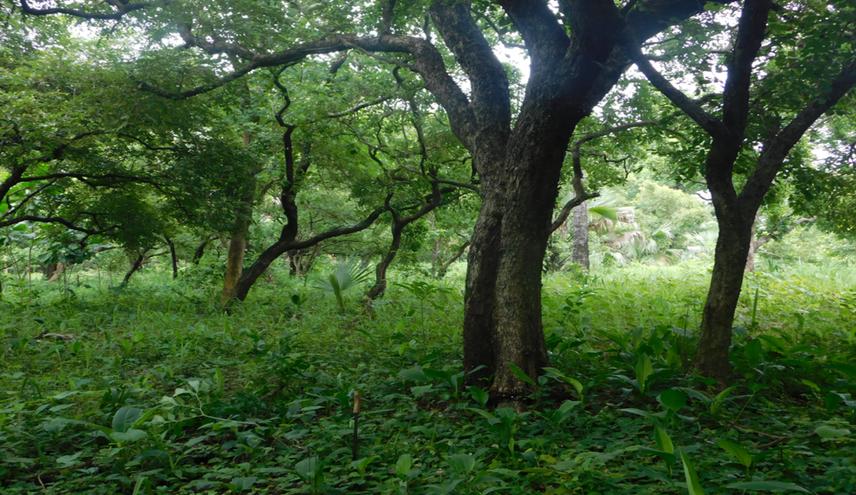Igbode Imoisime Omoarebu
This initiative aims to conserve the endangered African rosewood (Pterocarpus erinaceus) within Weppa Woodland and surrounding community forests by integrating ecological research with community engagement. Native to the Guinea-Sudan Savanna belt of West Africa, P. erinaceus is listed as endangered by both the IUCN and CITES due to extensive exploitation, habitat loss, and climate change (Adjonou et al., 2019; Dumenu, 2019).

Showing African rosewood in Weppa Woodland, Weppa, Agenebode. © Samson Da’an.
The objectives of the project are to assess: (i) people’s attitudes and perceptions of P. erinaceus conservation and biodiversity; (ii) the potential threats faced by the species in the area; (iii) the distribution of the species within the Weppa Woodland and surrounding community forests; and
(iv) the ecology of P. erinaceus, with a focus on soil physicochemical properties, potential faunal pollinators, and seed dispersers.
The project will begin by assessing local perceptions and attitudes towards P. erinaceus and biodiversity conservation. This will be achieved through household questionnaires and focus group discussions. Simultaneously, threats to the species—including logging, fire and grazing—will be identified via field observations and personal interviews with locals.
Although the species is well known for its medicinal value, limited ecological data exist. To address this, a field survey will be conducted to map the distribution of P. erinaceus using GPS coordinates. This spatial data will inform habitat suitability models and guide future restoration efforts across Nigeria’s Guinea Savanna zones.
Furthermore, the project will investigate the ecological conditions favourable to P. erinaceus, focusing on soil physicochemical properties that influence its germination. Additionally, it will assess potential pollinators and seed dispersers. Insect pollinators will be sampled near identified tree stands using sweep nets and knockdown methods. Bird species that are likely seed dispersers will be recorded using point count transects, binoculars, and field guides for identification.
The findings will inform both in-situ and ex-situ conservation strategies and contribute to awareness campaigns targeting Weppa Woodland managers, local communities, and key stakeholders. The educational outreach and policy advocacy will promote sustainable forest management practices, especially in vulnerable buffer zones and unprotected community forests.
By combining ecological research with community-based conservation and stakeholder involvement, this project will not only enhance the survival of P. erinaceus, but also benefit broader biodiversity, including migratory and resident bird species that depend on Weppa Woodland’s mosaic of habitats. This project promises to be a holistic model for the protection of threatened species through informed management and local stewardship.